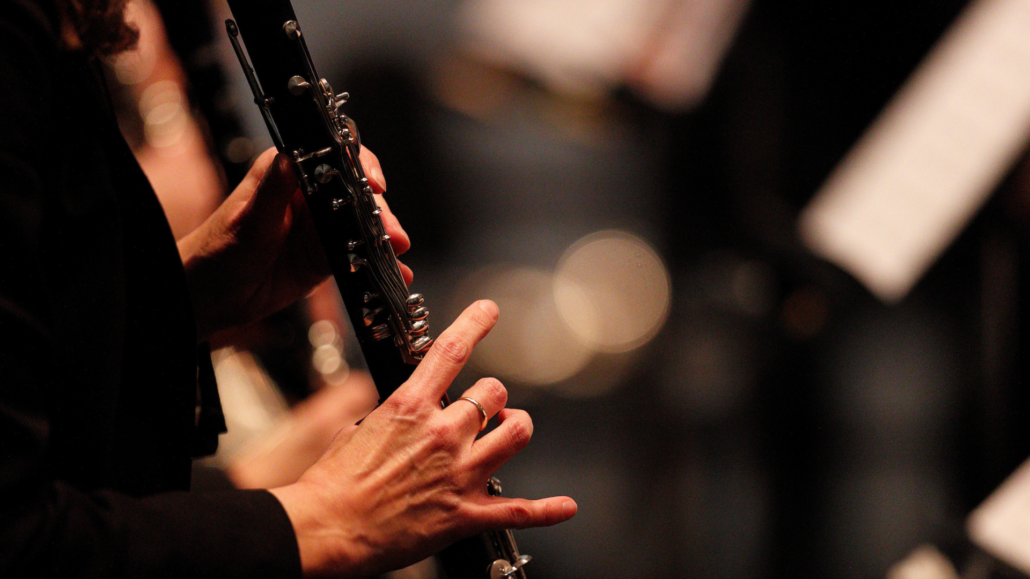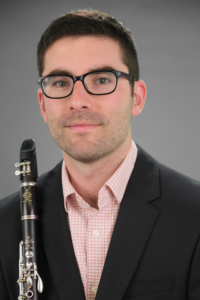KLUXEN – MOZART’S PRAGUE SYMPHONY
As tragedies go, it’s a minor one. Nonetheless, posterity was robbed of a great deal of pleasure when Carl Nielsen failed to complete his self-imposed assignment of writing a concerto for each member of the Copenhagen Wind Quintet. His earlier Wind Quintet, from 1922, had played with the contrasting personalities of the ensemble, and Nielsen aimed to build on that foundation with full-length psychological portraits of his five friends. Alas, death intervened, but not before he had completed the Concerto for Flute and Orchestra for Gilbert Jespersen, and a comparable work for clarinetist Aage Oxenvad.
The Concerto for Clarinet and Orchestra was not received by Oxenvad with unalloyed gratitude. “He must be able to play the clarinet himself, otherwise he would hardly have been able to find the worst notes to play,” the virtuoso initially reported, an assessment that soloist David Boutin-Bourque believes should be taken with at least a grain of good Danish sea salt.
“I definitely understand where he’s coming from,” the Victoria Symphony’s new first clarinet continues, “but I think that was in jest. I know that Nielsen and Oxenvad were good friends, and Nielsen had a lot of respect for him. I read somewhere that he said that Nielsen was really looking forward to hearing what Oxenvad would do with the piece, ‘because if he can’t get anything out of it then no-one can.’”
The 1928 premiere, held just three years before Nielsen’s passing in 1931, must have been a success, for the Concerto for Clarinet and Orchestra has since become, as Boutin-Bourque puts it, “one of those major pieces for the clarinet that we study for a long time”.
It is also a masterful character sketch. In it, we can hear both the plain-spokenness and the abrupt mood swings that Oxenvad and Nielsen shared—both have been posthumously diagnosed as suffering from bipolar disorder—and this sensitivity to character might also be a link between the four otherwise diverse works in this undeniably ambitious program. All the pieces cast members of the orchestra as actors in a play—or perhaps, in the case of György Ligeti’s Melodien, figures in a dance.
For Victoria Symphony music director Christian Kluxen, Wolfgang Amadeus Mozart’s Symphony No. 38 in D minor, or “Prague Symphony”, incorporates “the same playful wit and melodic genius of his opera The Marriage of Figaro”. Written very shortly after that landmark work, it also prefigures Mozart’s character-driven comic masterpiece Don Giovanni and the more mystical, searching themes of The Magic Flute. Kluxen also find parallels between Mozart and Erich Wolfgang Korngold: both were child prodigies who later on developed immense technical skills, and whose greatest successes came through dramatic works, although Mozart’s took place on the stage while Korngold worked to animate a wide range of Hollywood blockbusters.
Assessing the Elizabethan drama that inspired Korngold’s “Much About Nothing” Suite, Kluxen points out the almost contrapuntal nature of William Shakespeare’s plot, noting that although the story is initially confusing, it operates according to its own internal logic. The principal characters, he believes, “are really all individuals, each going their own way, almost like chess pieces playing a game of love and intrigue.
“Does this sound like the plots for Mozart’s most famous operas?” he continues.
Further connections can be developed. Mozart was a radical in his own time, and while both Nielsen and Korngold are rooted in the musical language of Romanticism, Kluxen contends that they were early modernists in disguise. Korngold, he says, built a bridge between the indelible melodies of the First Viennese School and the atonality of the Second, while Nielsen prefigured the sarcastic bombast that Dmitri Shostakovich would later develop so powerfully.
For the conductor, Korngold might be “the odd one out” in this program, but others will almost certainly question Ligeti’s relationship to the rest. With its combination of percussive and bell-like tones from celesta, glockenspiel, and crotales, Melodien anticipates much 21st-century composition, bearing little structural relationship to earlier forms of musical organization. Ligeti himself describe this 1971 work as containing “contrasting kinetic elements [that create] a single continuous structure in a permanent state of flux, flowing along like a river.”
Within this continuum, however, “there are sudden inlets and even fissures that disrupt the calm and gradual transformation of the musical material.” One could see Ligeti’s sonic cells as moving with the randomness of Brownian motion, but close attention reveals fractal connections between Melodien’s many micro-melodies. There’s no real chaos here; as in Shakespearean drama, with close attention we can determine a complex and twisting plot.
Labyrinthine? Perhaps. But no less rewarding than trying to follow the action in a Mozart opera, and certainly no more twisted than the playful sparring of Nielsen and his friend Oxenvad. “What you see is not always what it is,” says Kluxen. So attend to the melodies and you’ll emerge transformed.
Notes by Alex Varty



 Christian Kluxen, conductor
Christian Kluxen, conductor David Boutin-Bourque, clarinet
David Boutin-Bourque, clarinet